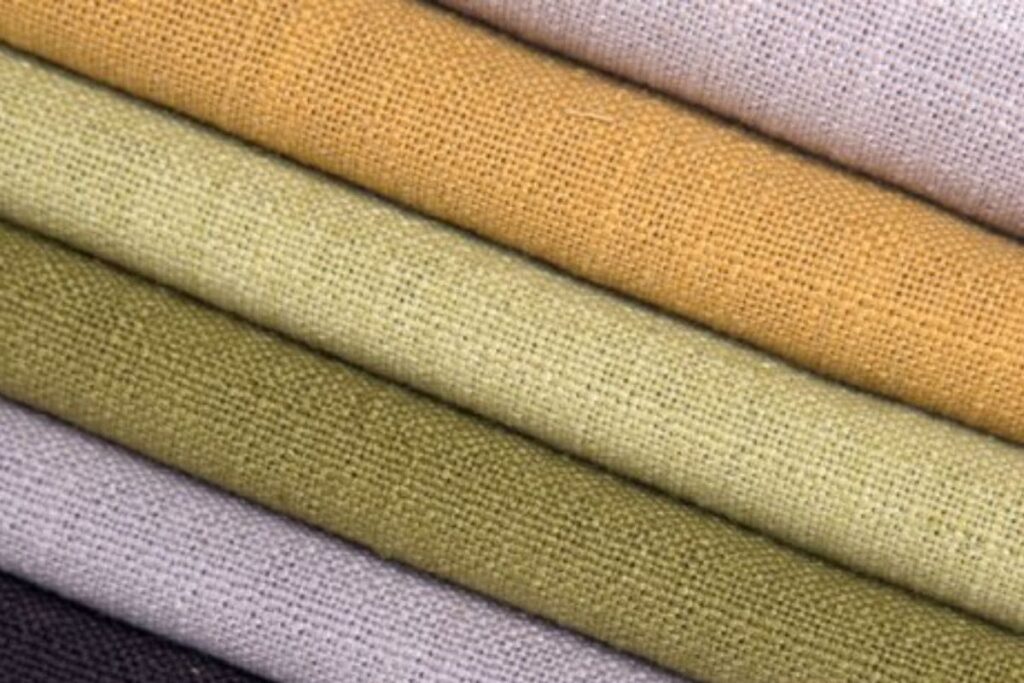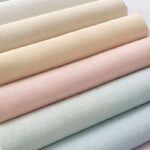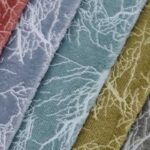Introduction to Jute Fabric
People often call jute fabric the “Golden Fibre” because of its natural golden sheen and its impressive environmental benefits. As an eco-friendly material, jute plays a key role in fashion, agriculture, and several other industries. However, there are multiple kinds of jute fabrics, each suited for specific purposes.
What Is Jute Material?

Jute is a product of the Corchorus genus. It has a soft, shiny texture and a golden glow. Furthermore, it is the second most cost-effective natural fiber, trailing only behind cotton in volume.
Types of Jute Fabric
Manufacturers classify jute fabric based on how they weave it, the treatments they apply, and its intended use. Here are the main types of jute fabric:
| Type of Jute Fabric | Description | Primary Uses |
|---|---|---|
| Hessian/Burlap | Lightweight, loosely woven jute fabric | Bags, sacks, decor |
| Sacking | Heavy, coarse jute fabric | Industrial bags, sandbags |
| Canvas | Tightly woven, stronger version | Upholstery, artist canvas |
| Jute-Cotton Blends | Mixed with cotton for softness | Clothing, home textiles |
| Decorative Jute | Dyed or printed for aesthetics | Table runners, wall art |
Jute Fabric for Clothing
Recent technological advancements have enabled jute to enter the world of fashion. Due to blending and softening processes, jute is now used in the manufacture of:
- Shirts made of jute cotton
- Environment-friendly sarees
- Jute blended jeans
- Summer jackets and blazers
These articles of clothing are eco-friendly and easy to wear, which makes them ideal for hot weather.
Common Uses of Jute Cloth
Jute cloth is very popular which makes it extremely application oriented. Other than garments it finds use in:
- Sacks and gunny bags
- Upholstery and decorations for the home
- Geo textiles meant for soil erosion control
- Rugs and mats
- Wrapping and packaging items as gifts
Key Properties of Jute
Here are some notable characteristics of jute:
| Property | Details |
|---|---|
| Biodegradable | Completely decomposes in soil |
| Durable | Strong enough for heavy-duty use |
| Breathable | Allows air circulation |
| UV Resistant | Resists sun damage |
| Low Cost | Inexpensive to produce and process |
Conclusion
From the above it is clear that jute fabric is an eco-friendly textile with multiple applications that is gaining prominence with the increasing global focus on sustainability. For fashion, decor, or packaging needs, jute’s admired for its sturdy nature, cost efficiency, and low environmental impact.
Frequently Asked Questions (FAQs)
1. What are some of the different kinds of jute fabric?
Hessian (Burlap), sacking, canvas, jute cotton blends and even decorative jute are some of the known types.
2. Is jute appropriate for use in clothing?
Absolutely. When blended with cotton, jute can be treated to be soft making it ideal for eco friendly shirts, dresses and jackets.
3. What are some fabric made from jute? Is it sustainable?
Yes, jute is fabrics that can be made out of it. Its also eco friendly because it is entirely biodegradable and renewable, on top of having not too many pesticides or fertilizers.
4. What is the difference between hessian and sacking jute?
Hessian is lighter and finer than sacking jute making it better for decorations. Meanwhile sacking is coarser and heavy duty material making it more useful for industrial purposes.
5.How should jute fabric be cared for?
Jute should be hand washed or gently machine washed in cold water. Avoid wringing or exposing it to excessive heat.



